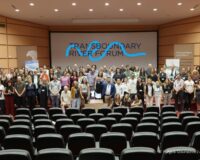The World Bank’s International Finance Corporation (IFC) is the largest financier of hydropower projects in protected areas in Albania, according to a study [1] undertaken by Riverwatch, EURONATUR and the CEE Bankwatch Network, published today.
IFC is the main supporter of 4 HPPs in protected areas in Albania with loans and advisory services worth 139 million euros. In addition, the European Bank for Reconstruction and Development (EBRD) has financed 2 hydropower plants located in areas of high sensitivity, being special habitats for wild fauna.
In total, IFC has financially supported 16 and EBRD 8 hydropower projects in Albania. This constitutes more than 80% of the 30 planned projects and those in production since 2005, for which sources of financing in Albania have been identified by the study [2].

The study highlights that some of the hydropower plants financed by EBRD and IFC in Albania not only have a negative impact on biodiversity, but also reduce people’s access to water resources and worsen water quality. The works at Bistrica 3 HPP, near the city of Saranda, financially supported by IFC, have been continuously suspended due to violations of environmental parameters and water pollution that has been caused. The hydroelectric power plant project of Tërnova in Dibër, financed by the EBRD, has depleted the sources of drinking water in the surrounding villages. Both projects have been strongly opposed by the local community.
The study also notes that 75 projects have been directly supported with €818 million by multilateral development banks [3] across South East Europe. 30 of these HPPs are within the boundaries of protected areas. However, in addition to the EBRD, the European Investment Bank (EIB) has provided 36 million euros for 27 small hydropower plants through commercial banks. They have declined to provide details on the names of the projects, citing client confidentiality.
Olsi Nika from EcoAlbania, at the same time the coordinator for Albania of the campaign “Saving the blue heart of Europe” says: “The fact that multilateral development banks have financed hydropower plants in protected areas in Albania shows that much more security is needed – from the banks themselves, the governments that control them and the Albanian state authorities”.
Other Austrian banks and public financing mechanisms, as well as the international public fund, have also contributed to the development of the “HEC Lengarica” hydropower project, influencing the Vjosa river, one of Europe’s last remaining wild rivers. In addition, 38 HPPs are planned in the Vjosa watershed, including 6 HPPs upstream in the Greek part of the river.
The concessionaire companies of hydropower projects in Albania are mainly local companies, but in most cases they are financially supported by foreign companies, with investments coming from Italy, Austria and Norway. The United Arab Emirates recently seems to have been involved in investments for the Shala river cascade, with an estimated power of up to 127M, which will partially affect the Theth National Park and the integrity and expansion of the Albanian Alps National Park, which it is planned to expand to include the entire Alpine area.
“Ultimately, if the problems caused by hydropower are not prevented in Albania and the rest of South-Eastern Europe, the whole renewable energy sector will face a severe backlash, so it is in the interest of the EU to increase its supervision in this sector, if it wants to promote renewable energy in its new member states and candidate countries for membership”, comments Klara Sikorova, researcher at the CEE Bankwatch Network.
“The good news is that most of the HPPs we analyzed are currently at the planning stage, which means we still have time to stop their development where necessary,” she added.
Contacts:
Olsi Nika EcoAlbania/ Blue Heart Campaign
E-mail: [email protected] | Mob. +355 69 29 44 757
Klara Sikorova/ CEE Bankwatch Network
E-mail: [email protected] | Tel. + (420) 274 822 150
Notes to the editor:
[1] The study and accompanying database can be found at: www.bankwatch.org. They cover Albania, Bosnia and Herzegovina, Bulgaria, Croatia, Vjosa/Aoós part of Greece, Kosovo, Macedonia, Montenegro, Serbia and Slovenia.
[2] A total of 436 hydropower projects were analyzed including planned HPPs as well as those already in operation starting in 2005 in Albania, turning the country into a regional leader in terms of the number of HPPs Eve. Most of them are only in the planning stage, which most likely have not reached a financing agreement yet, while others are financed by commercial bank loans which are usually untraceable.
‘Funding sources’ include loans, guarantees, grants for the preparation of projects or consultancy services.
“HEC” refers to each individual hydro plant facility, so a loan or guarantee may cover several HECs simultaneously, even though it is classified as a single “project” by a funder.
[3] EBRD, European Investment Bank (EIB) and World Bank Group institutions (Multilateral Investment Guarantee Agency (MIGA), International Finance Corporation (IFC), International Bank for Reconstruction and Development (EBRD) and International Agency for Development (IDA).







